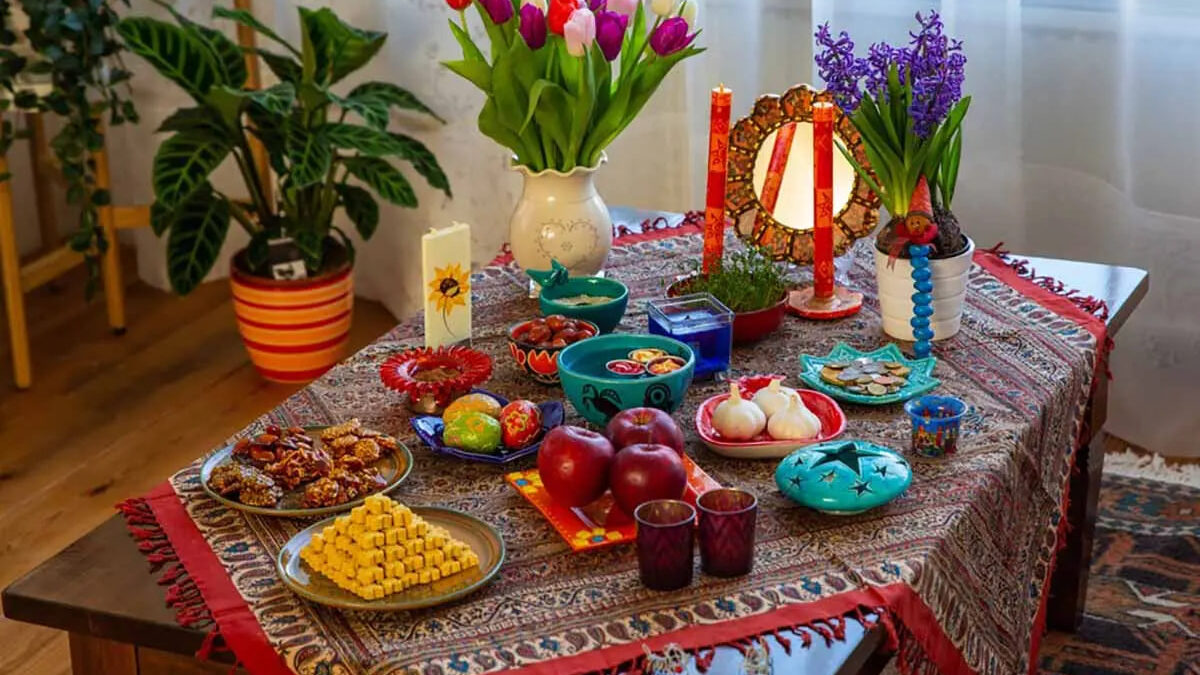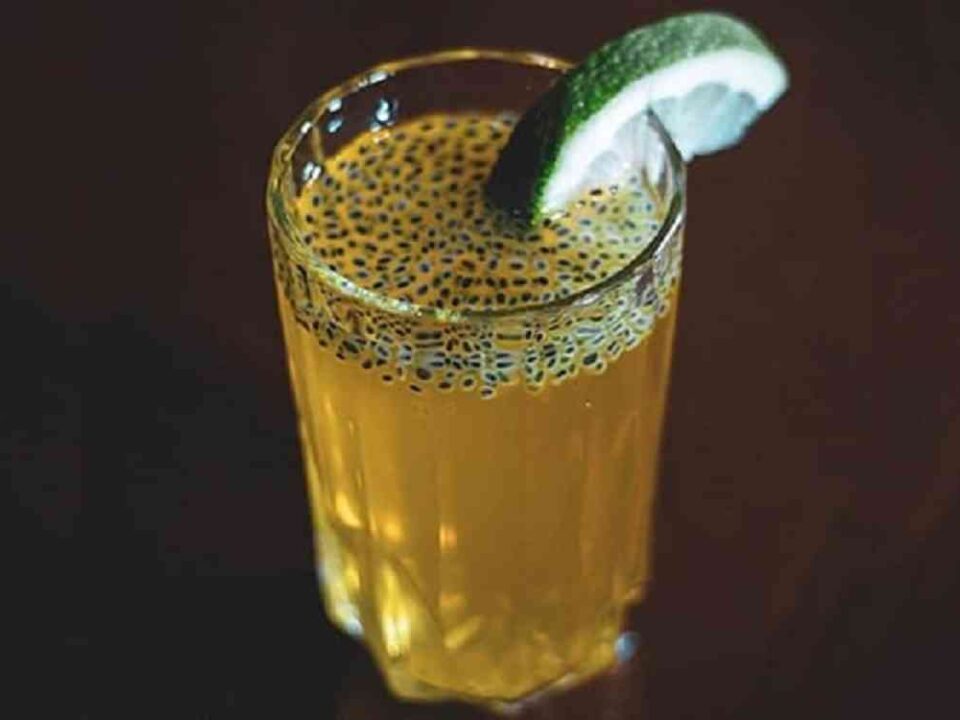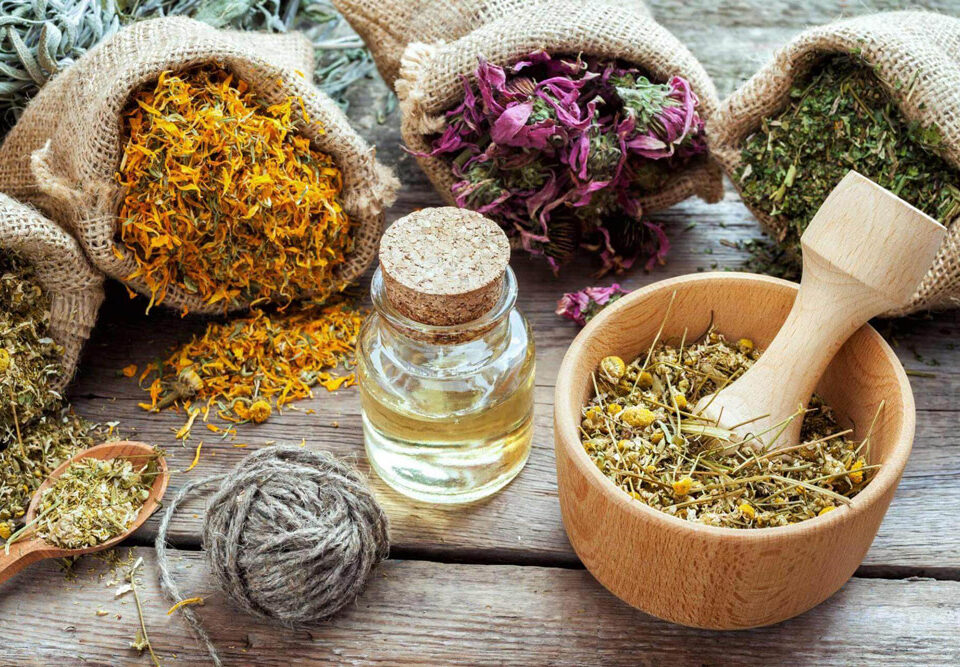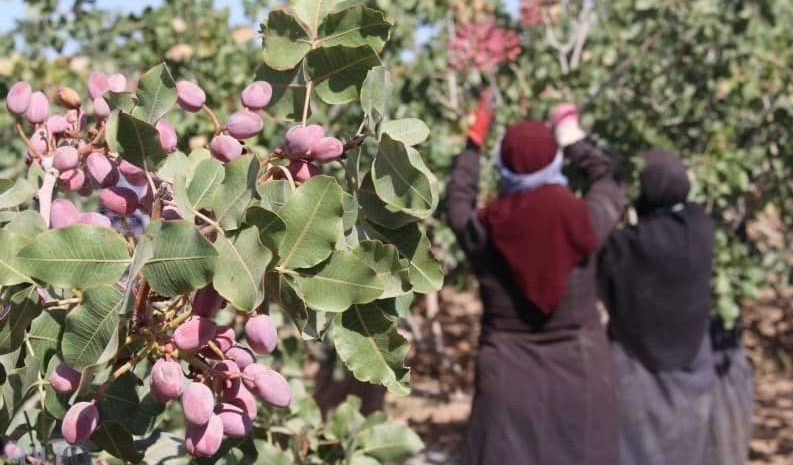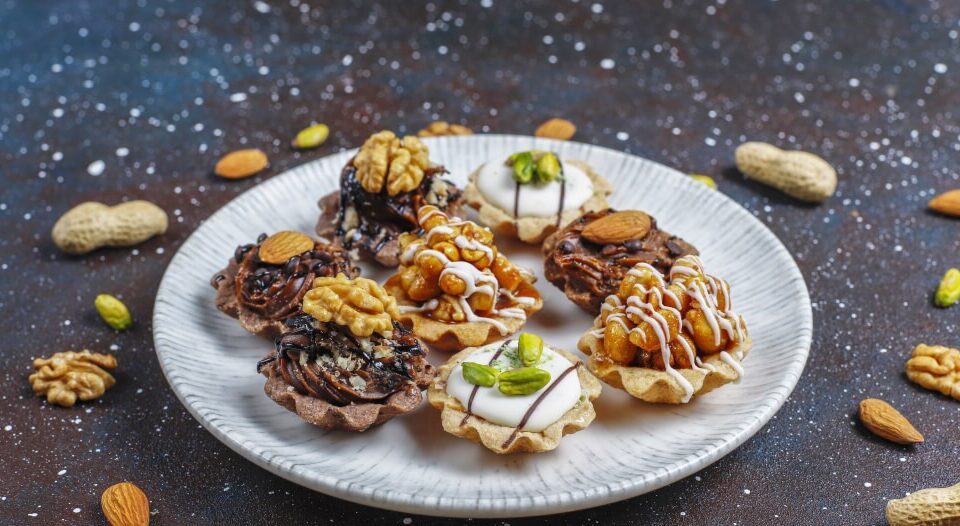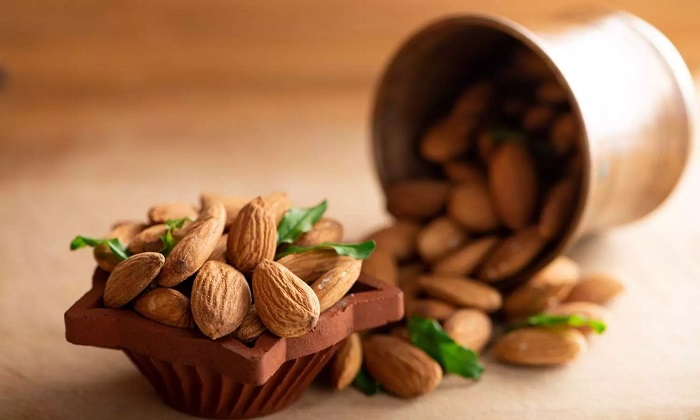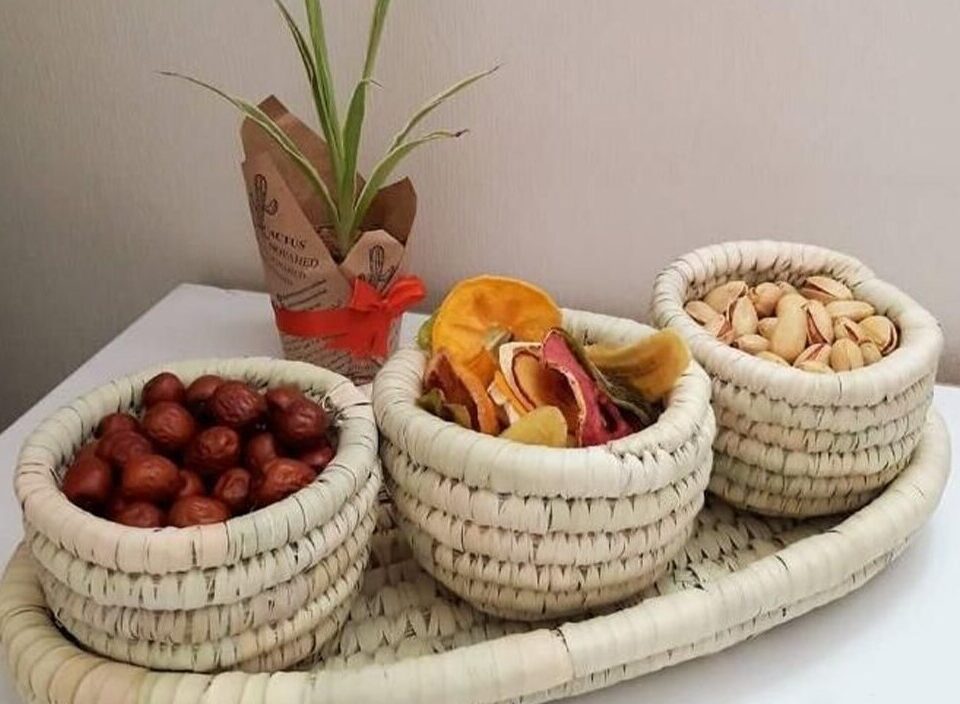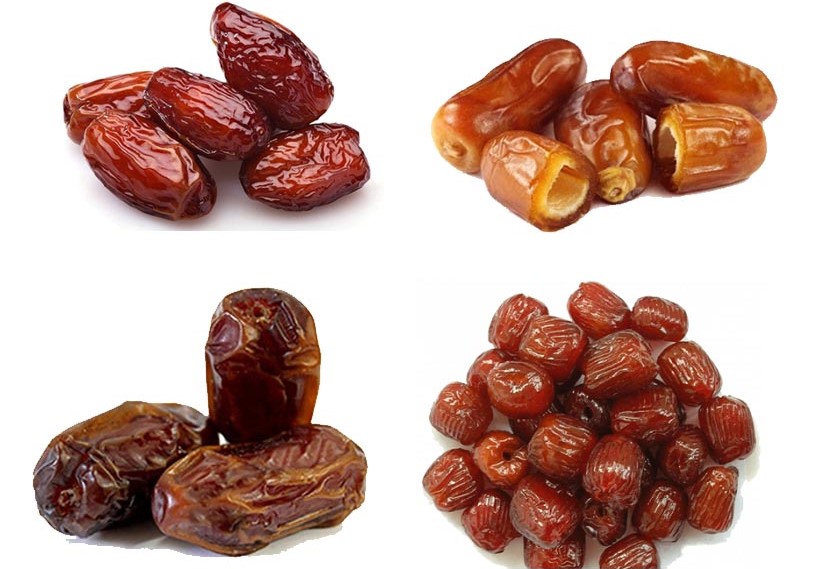
Understanding the Different Types of Dates from Iran
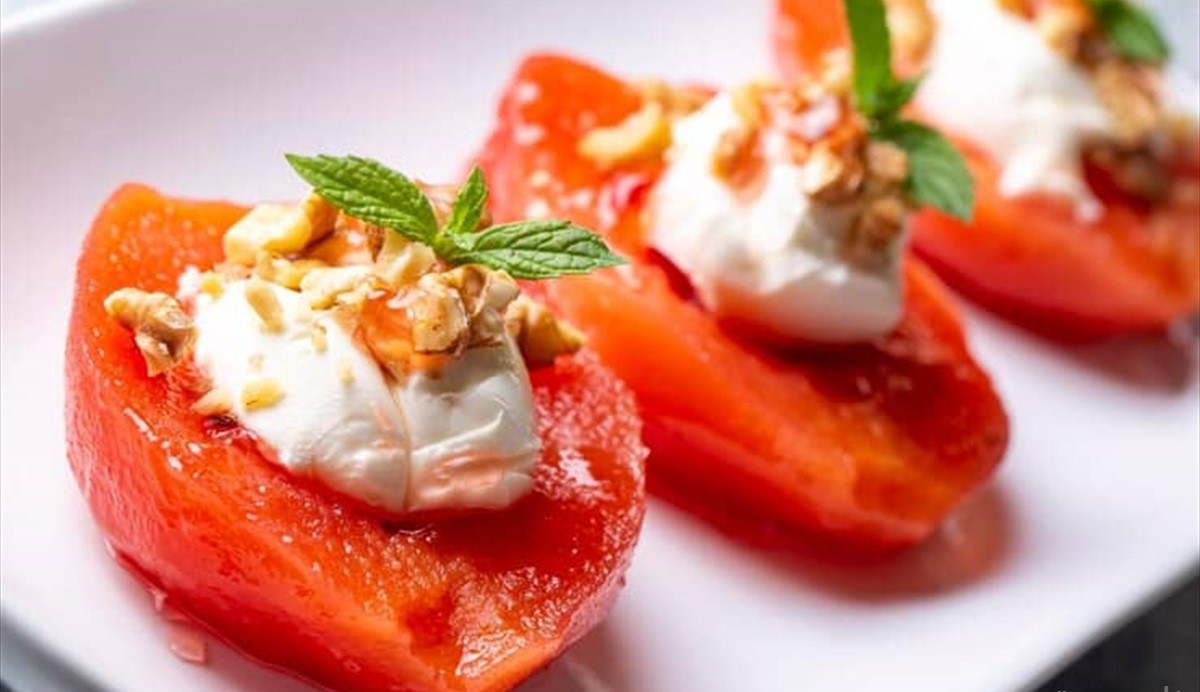
Best Iranian Dried Fruits for Making Desserts
Traditional Uses During the Celebrations
Nowruz, the Persian New Year, is one of the most important and widely celebrated festivals in Iran and other parts of the world where Persian culture has a strong influence. As a celebration of renewal, nature, and the arrival of spring, Nowruz is steeped in ancient traditions that date back over 3,000 years. One of the most symbolic and enjoyable aspects of Nowruz is the food, and nuts and dried fruits play a significant role in the festivities. These foods, rich in history and symbolism, are used in various ways during Nowruz, from special dishes to symbolic offerings.
Here’s a look at the traditional uses of nuts and dried fruits during Nowruz and why they hold such importance in this ancient celebration.
1. Ajil-e Moshkel Gosha (Problem-Solving Trail Mix)
One of the most iconic and beloved Nowruz traditions involving nuts and dried fruits is Ajil-e Moshkel Gosha, a special trail mix that is prepared for the Persian New Year and other special occasions. The name Moshkel Gosha translates to “problem solver,” symbolizing the belief that consuming this mix can help resolve difficulties and bring blessings for the coming year.
Ingredients:
- Mixed nuts: Pistachios, almonds, walnuts, hazelnuts.
- Dried fruits: Raisins, dried apricots, dried figs, and dates.
- Chickpeas: Often roasted or salted.
- Pumpkin seeds and melon seeds: To add extra crunch and flavor.
Symbolism and Tradition:
- Ajil-e Moshkel Gosha is not just a snack but also a symbolic offering. It is believed that sharing this mix with others during Nowruz promotes friendship, harmony, and goodwill. The blend of sweet and salty flavors represents the balance of life’s challenges and pleasures.
- This trail mix is often placed in bowls during Nowruz gatherings and offered to guests as a welcoming gesture. It is also commonly enjoyed during Chaharshanbe Suri, the fire-jumping festival that takes place just before Nowruz, to bring good fortune and solve problems.
How it’s Consumed:
- As a snack: Ajil-e Moshkel Gosha is often served to guests during Nowruz visits and gatherings, as a way to symbolize hospitality and good fortune.
- Gift-giving: Many families prepare Ajil as part of their Nowruz preparations and give it as a gift when visiting relatives and friends.
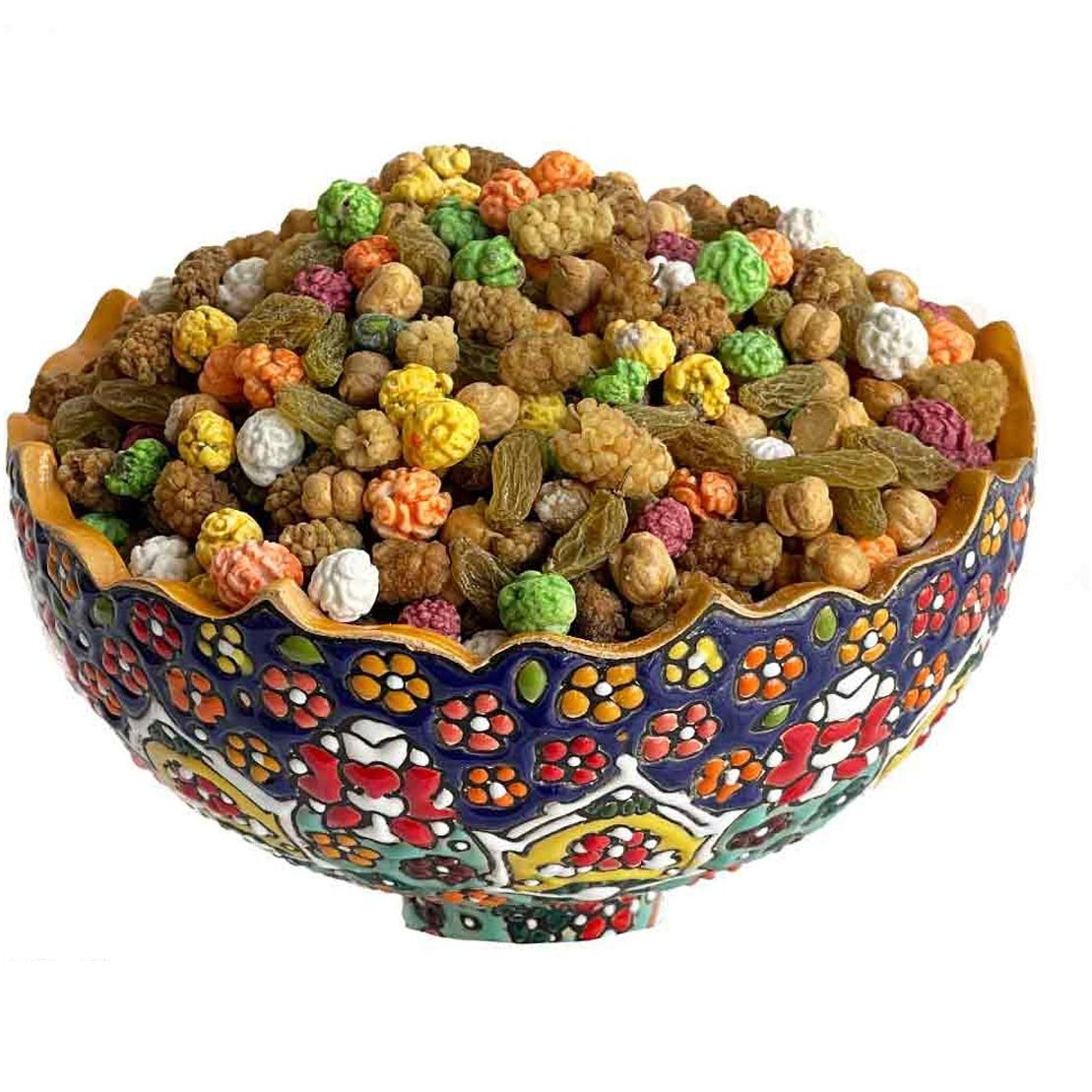
Ajil-e Moshkel Gosha (Problem-Solving Trail Mix)
2. Nuts and Dried Fruits on the Haft-Seen Table
The Haft-Seen table is a central element of Nowruz celebrations, featuring seven symbolic items that start with the Persian letter “S.” While nuts and dried fruits are not part of the traditional Haft-Seen items, they are often added to Nowruz tables to complement the feast and enhance the overall abundance and prosperity the table represents.
Popular Nuts and Dried Fruits on the Haft-Seen:
- Pistachios: A common symbol of wealth and fertility, pistachios are frequently included on Nowruz tables and shared during the celebrations.
- Dried figs and dates: These fruits are often included to represent abundance, sweetness, and sustenance for the new year.
- Almonds and walnuts: Nuts like almonds and walnuts, rich in nutrients and flavor, are often arranged in decorative bowls alongside other symbolic Nowruz foods.
Symbolism:
- Fertility and Prosperity: Nuts, in particular, represent fertility, wealth, and the hope for a bountiful year ahead. Their presence on the table symbolizes abundance and the blessings of the coming year.
- Longevity and Health: Dried fruits, especially those like figs and apricots, are associated with health and longevity, making them a meaningful addition to the Nowruz spread.
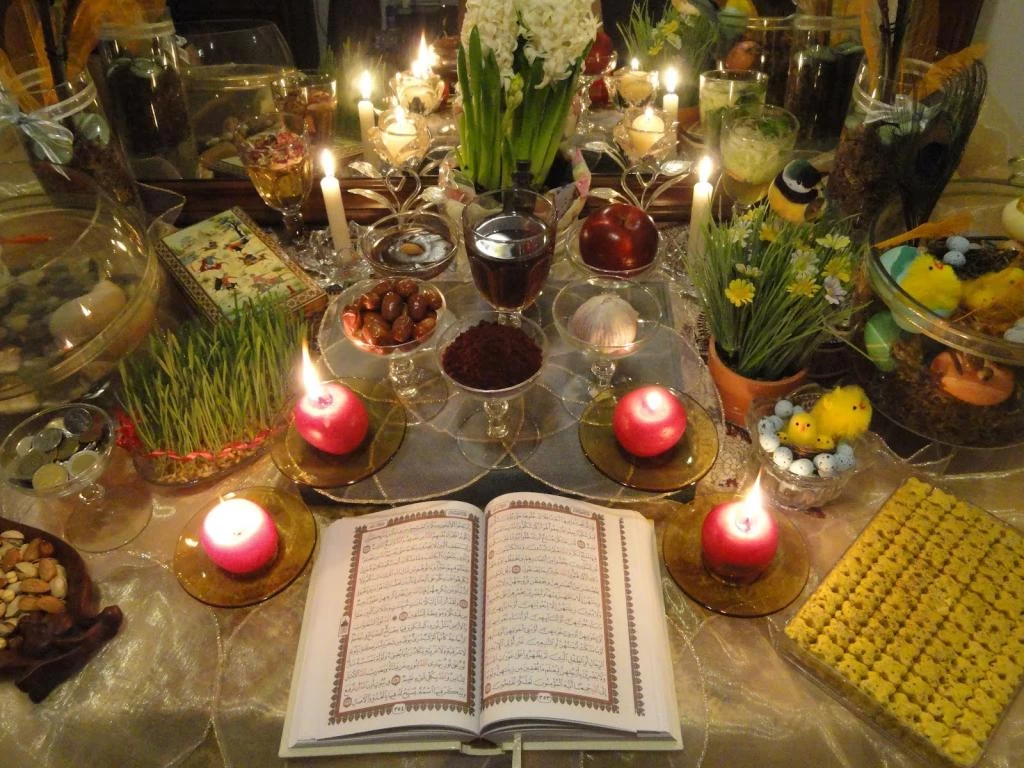
Haft Sin in Nowruz
3. Sweets and Desserts Made with Nuts and Dried Fruits
Sweets are an integral part of Nowruz, and many traditional Persian desserts incorporate nuts and dried fruits for their flavor, texture, and symbolism of sweetness and prosperity.
Popular Nowruz Desserts with Nuts and Dried Fruits:
- Baklava: A rich, sweet pastry made of layers of phyllo dough filled with chopped nuts (like pistachios, almonds, and walnuts) and sweetened with honey or syrup. Baklava is often served during Nowruz to represent the sweetness and richness of life.
- Nan-e Berenji: Persian rice cookies flavored with rosewater and often garnished with crushed pistachios. These delicate cookies are a Nowruz staple and are offered to guests during the celebrations.
- Nan-e Nokhodchi: These chickpea flour cookies are made with cardamom and often decorated with ground pistachios. They are soft, melt-in-the-mouth treats traditionally enjoyed during Nowruz.
- Saffron Rice Pudding (Sholeh Zard): A fragrant, sweet rice pudding made with saffron, and rosewater, and topped with pistachios and almonds. Sholeh Zard is a classic Persian dessert that is often served during Nowruz for its comforting and festive flavors.
How They’re Enjoyed:
- Shared with guests: These desserts are prepared in advance and offered to guests who visit during the two-week Nowruz holiday.
- Gifted to family and friends: It’s common to bring trays of baklava, cookies, or other sweets as gifts when visiting loved ones during Nowruz.
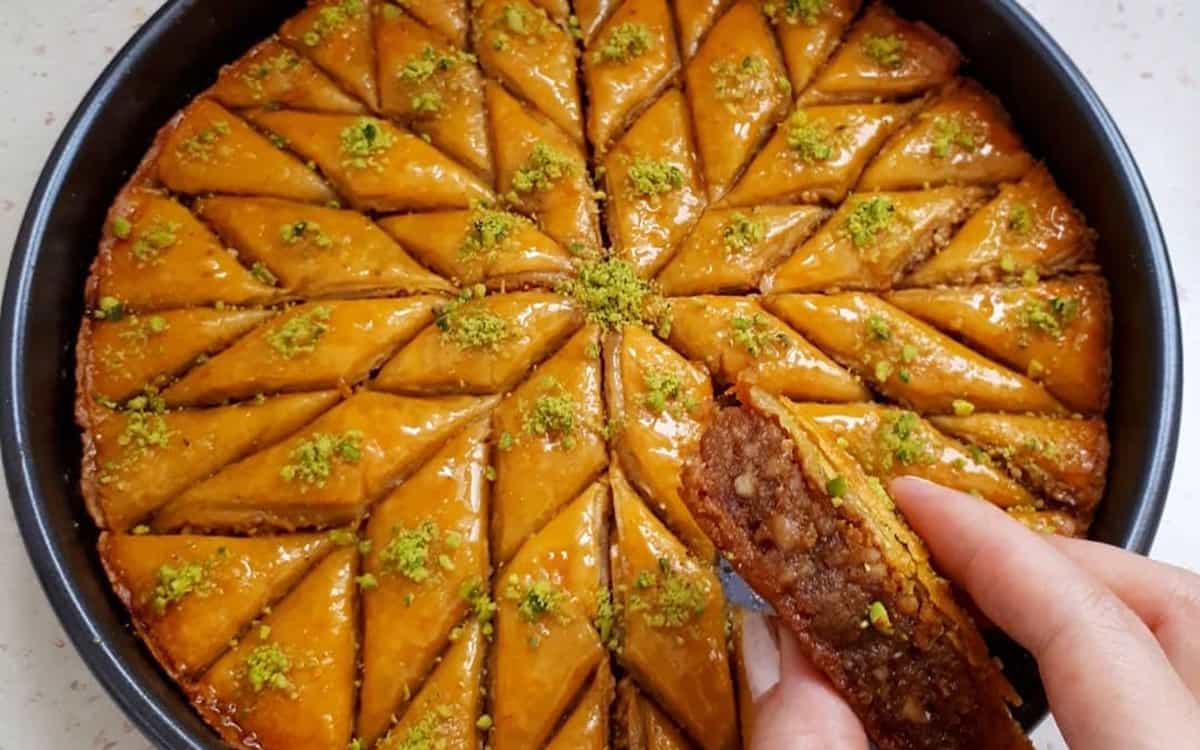
baklava
4. Nuts and Dried Fruits in Savory Dishes
Beyond sweets, nuts, and dried fruits play an important role in savory dishes during Nowruz feasts. Persian cuisine is known for its use of dried fruits and nuts in rice dishes, stews, and other traditional meals, where they add complexity, flavor, and texture.
Traditional Nowruz Dishes with Nuts and Dried Fruits:
- Shirin Polo (Sweet Rice): A special rice dish made with slivered almonds, pistachios, orange zest, dried apricots, and raisins. It’s served with meat or chicken and is a festive dish often prepared for Nowruz gatherings.
- Fesenjan: A rich, sweet-sour stew made with ground walnuts and pomegranate molasses, often served with chicken or duck. Fesenjan is a popular dish during Nowruz because of its luxurious flavors and the use of walnuts, symbolizing abundance.
- Baqala Polo: A fragrant rice dish made with dill, and fava beans, and often garnished with pistachios or almonds. It is traditionally served with lamb or fish as part of Nowruz celebrations.
Symbolism:
- Fertility and Renewal: Nuts and dried fruits, especially pistachios and almonds, symbolize fertility and renewal in Persian culture, making them essential in dishes served during Nowruz, a holiday that celebrates the rebirth of nature.
- Wealth and Prosperity: Dried fruits such as raisins, apricots, and dates represent wealth and prosperity, adding both sweetness and symbolic meaning to Nowruz meals.
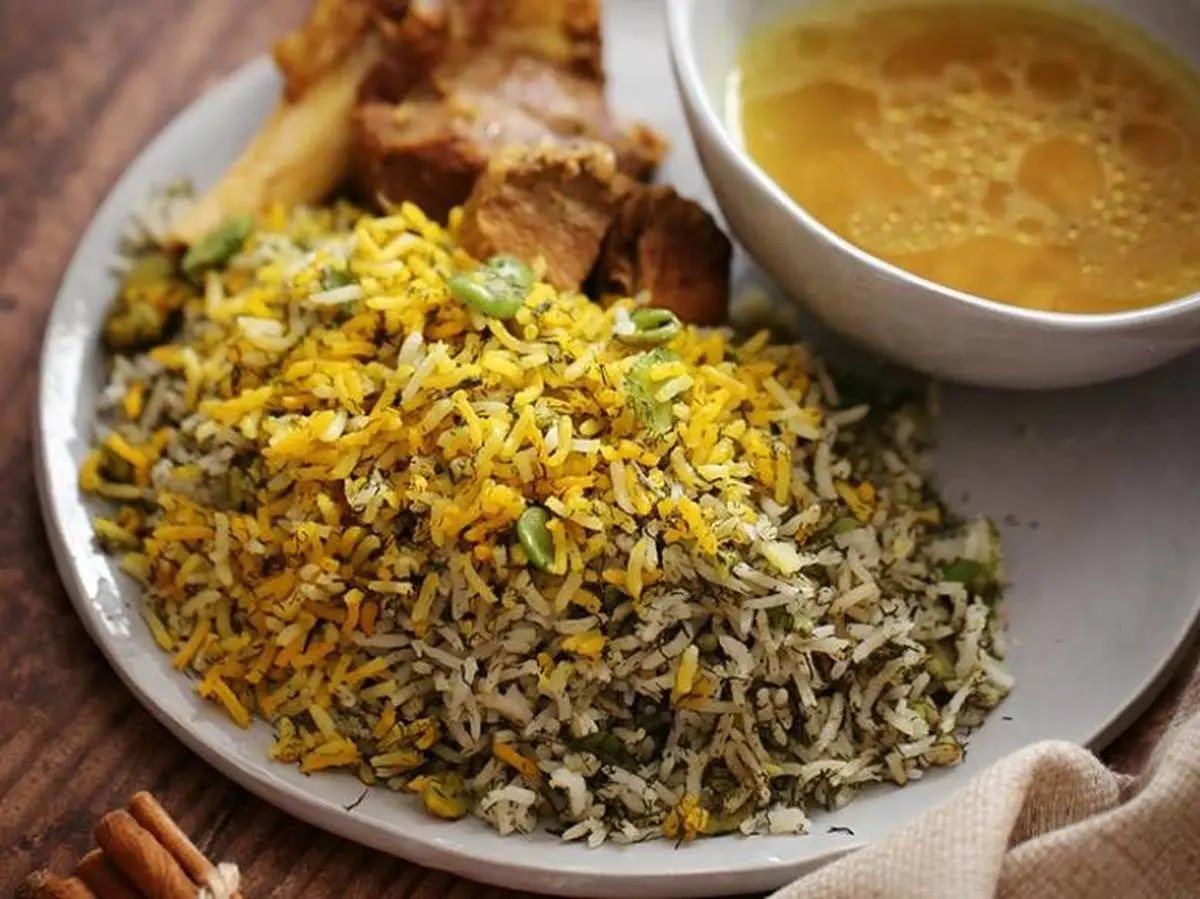
Baghali Polo ba Mahicheh
5. Nuts and Dried Fruits as Gifts
Gifting is an important part of Nowruz, and it’s common for families to present their loved ones with baskets of nuts, dried fruits, and sweets. These gifts are not only a gesture of generosity but also a way of wishing the recipient abundance, prosperity, and sweetness in the coming year.
Common Gift Items:
- Mixed dried fruits and nuts: Beautifully arranged baskets of pistachios, almonds, raisins, dried apricots, and dates are commonly gifted to friends and family during Nowruz.
- Sweets: Boxes of baklava, nougat (gaz), and nan-e nokhodchi are also popular gifts, as they represent sweetness and happiness.
- Ajil: Gifted as a token of goodwill and to resolve any lingering challenges, Ajil is a meaningful and thoughtful gift during the New Year celebrations.
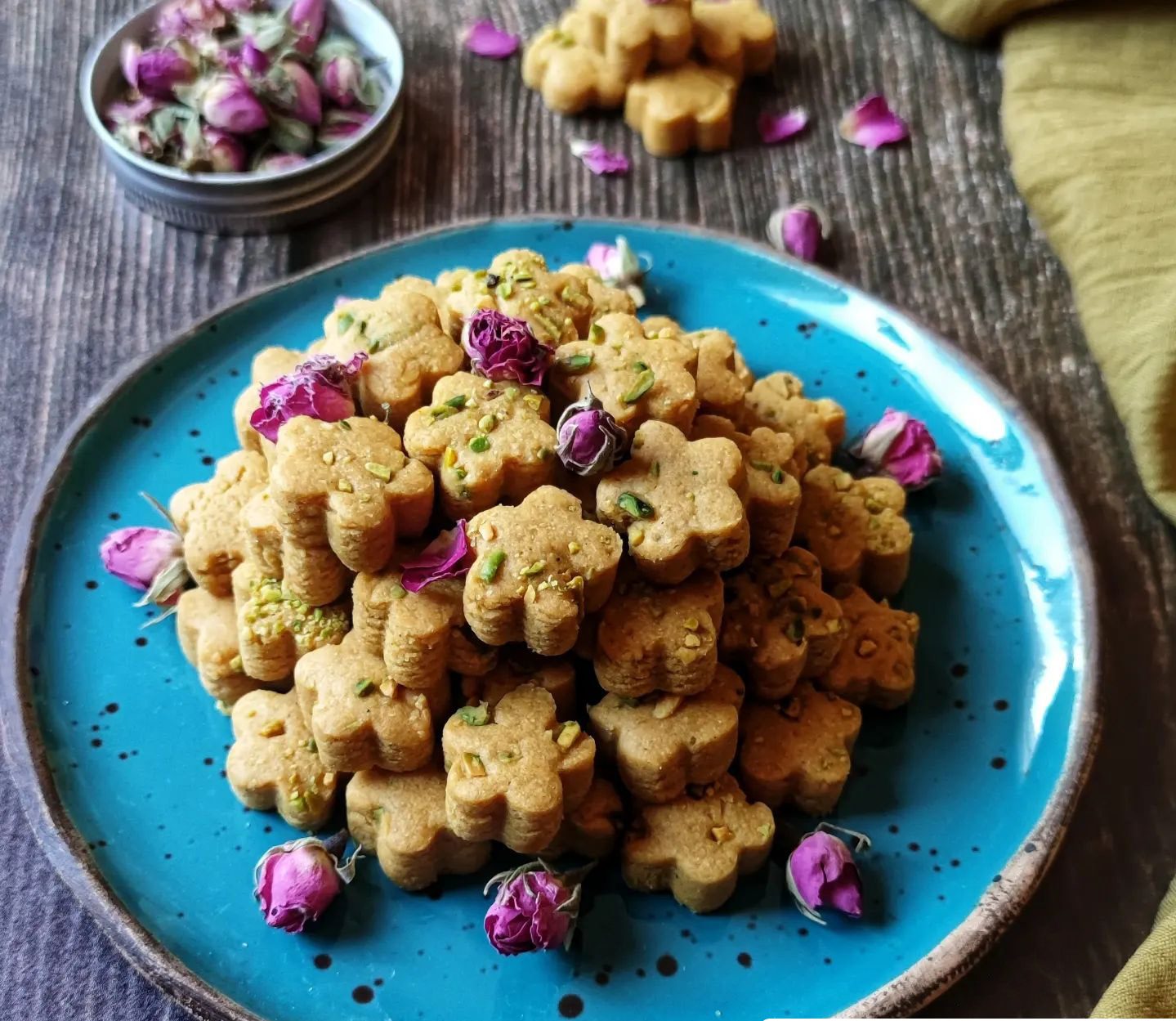
Nan-e Nokhodchi
Conclusion
Nuts and dried fruits hold a special place in Nowruz celebrations, symbolizing abundance, prosperity, fertility, and the sweetness of life. From the traditional Ajil-e Moshkel Gosha to delicious Persian sweets and savory rice dishes, these nutrient-rich foods are woven into the very fabric of Persian New Year customs. Whether enjoyed in savory dishes, offered as snacks, or gifted to loved ones, nuts, and dried fruits represent the blessings and hope for a prosperous and joyful year ahead.

